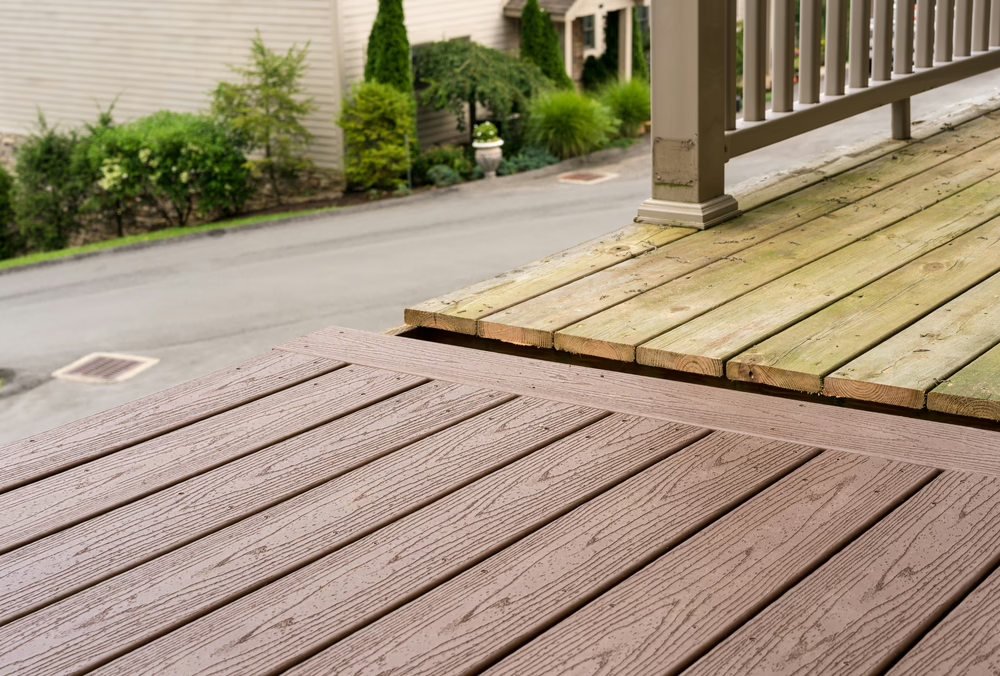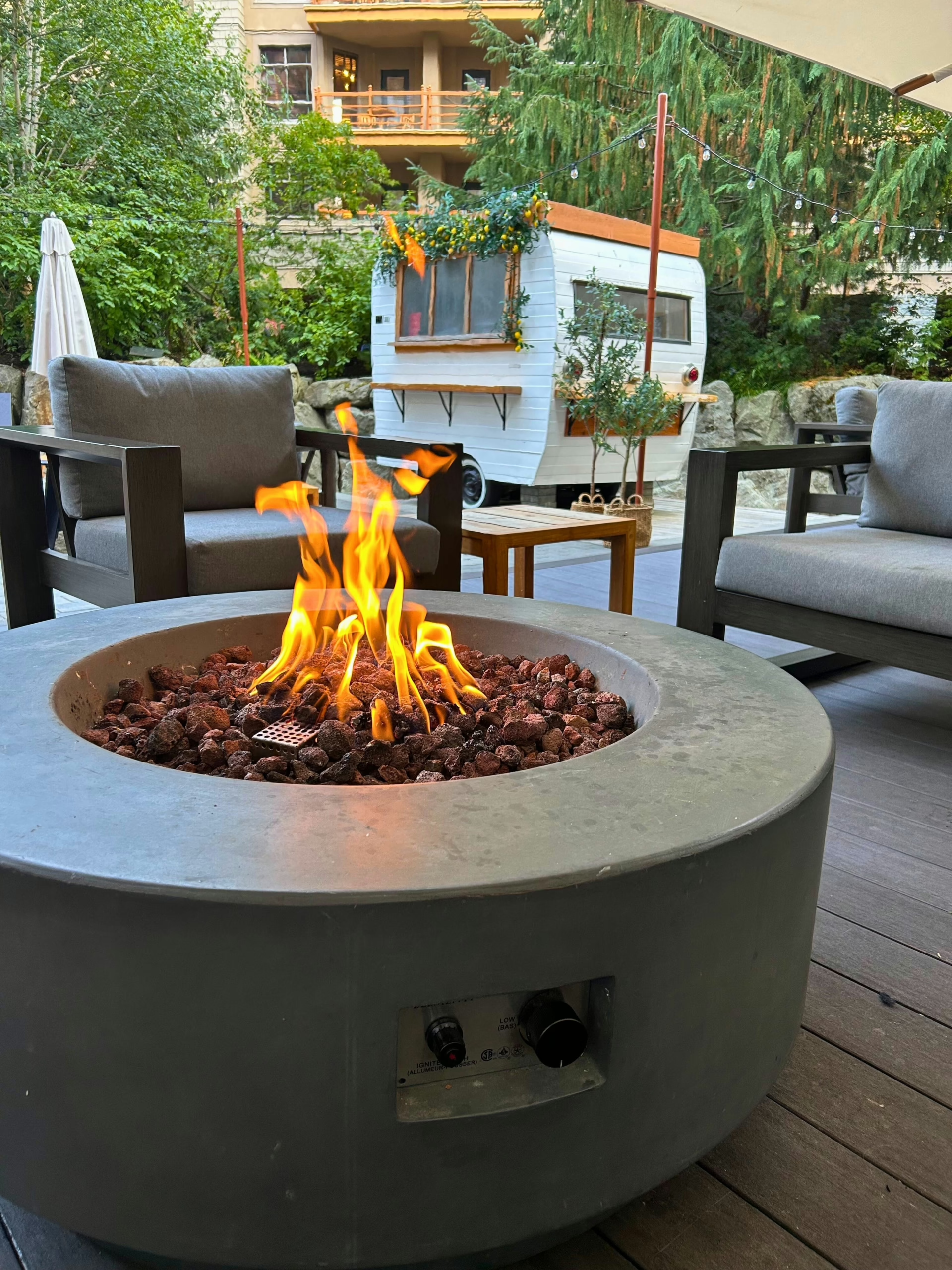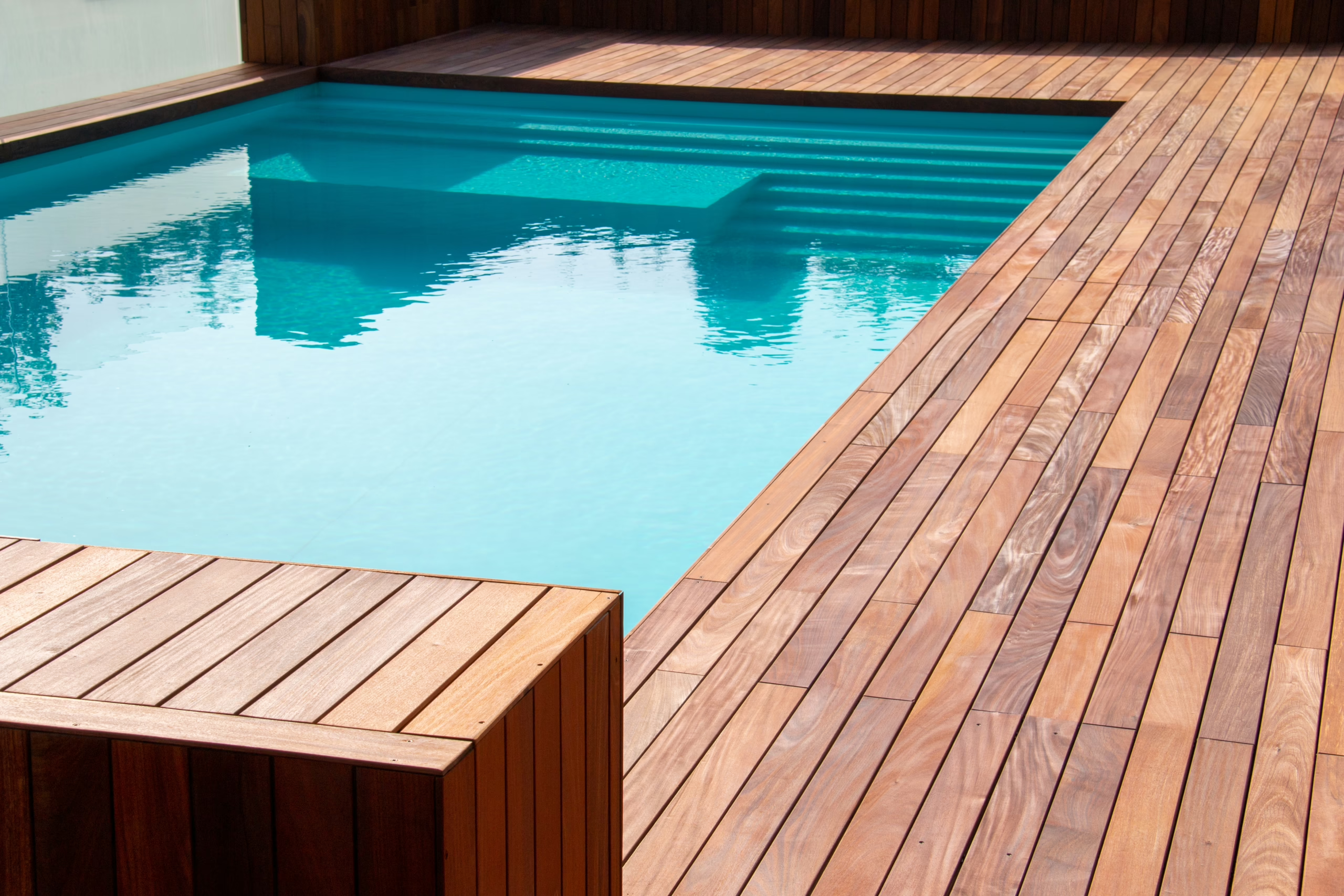A deck is one of the most enjoyable outdoor features you can add to your home. It’s the ideal location for hosting summer barbecues, entertaining, or just lounging with a book. However, if you live in a region that experiences a lot of rain, you are aware of how quickly a downpour can alter your plans. Puddles, slippery conditions, and wet surfaces can make your lovely deck feel unusable. Professional deck services in Lansdale, PA, cover everything from new installations to repairs and upgrades, helping homeowners create outdoor spaces that fit their lifestyle.
The good news is that your deck doesn’t have to be rendered inoperable by rain. You can design an outdoor area that is both quick to dry and long-lasting by keeping rain-readiness in mind. Every little detail, from the decking materials you select to the surface slope and the drainage systems underneath, affects how well your deck functions following a storm.
The main elements of a rain-ready deck that every homeowner should be aware of are broken down in this guide:
- Decking materials that dry quickly
- Surfaces with pitches for better runoff
- Drainage systems for rainwater management
- Weatherproof accessories
- Rain-smart design’s long-term advantages
Quick-Dry Decking Materials
A rain-ready design starts with the decking material selection. For many years, traditional pressure-treated lumber has been the preferred choice; however, it needs regular upkeep and has a tendency to absorb moisture, which causes warping, splitting, and the growth of mildew. Thankfully, contemporary materials perform significantly better in damp environments.
Composite Decking
One of the most widely used substitutes for wood is composite decking. It is composed of a blend of wood fibers and recycled plastics, which results in a long-lasting surface that dries faster and resists moisture. To stop water from leaking in, many manufacturers use protective caps.
- Benefits: Mold-resistant, fade-resistant, and low maintenance.
- Rain Advantage: Even after several storms, composite materials maintain their shape because they do not swell or shrink as much as wood.
PVC Decking
PVC decking is a great option for the highest level of water resistance. PVC boards are completely synthetic and do not absorb any moisture.
- Benefits: Extremely resilient, scratch-resistant, and lightweight.
- Rain Advantage: Your deck dries more quickly and is less likely to get slick areas because water beads and rolls off the surface.
Modified Wood
Modified wood is a great choice if you prefer the organic appearance of wood but want improved weather resistance. The structure of the wood fibers is altered by thermal or chemical treatments, increasing their resistance to moisture and deterioration.
- Benefits: Enhanced stability and a natural appearance.
- Rain Advantage: Less expansion and contraction and quicker drying than untreated lumber.
Why It Matters
Quick-dry materials prolong the life of your deck and keep it safe and usable after a storm. Limiting water absorption lowers the chance of rot and, eventually, your maintenance requirements.
Pitched Surfaces for Better Runoff
If rainwater has nowhere to go, no amount of water-resistant decking will help. Although it may seem ideal, a perfectly level deck surface actually collects puddles. Standing water puts undue strain on the deck’s structure, makes areas slick, and promotes the growth of algae.
The Ideal Pitch
A small slope, roughly 1/8 inch per foot, should be included in the design, according to deck builders. This is sufficient to let water run off the surface organically and undetectable while you’re sitting on the deck or walking.
Board Orientation
Runoff is also influenced by the direction of your decking boards. Water can flow more freely through boards that run parallel to the slope. In order to better channel water away, some homeowners even opt for decking boards with grooves.
Framing and Flashing Considerations
To keep water from collecting where your deck and house meet, proper flashing and framing are crucial. While proper board spacing permits rain to drain through rather than collect on the surface, flashing tape applied to joists and beams prevents water penetration of these structural components.
Why It Matters
In addition to shedding water more efficiently and drying out more quickly after rain, a deck with a slight pitch and properly oriented boards will also shield the underlying framing from long-term water damage.
Drainage Solutions for a Drier Deck
Certain decks benefit from extra drainage systems even when the materials and slope are appropriate. For raised decks, where rain can seep through the boards and impact the space below, this is especially crucial. Working with experienced deck builders in Ambler, PA, gives homeowners the confidence that their outdoor space will be built with quality materials and lasting craftsmanship.
Under-Deck Drainage Systems
These systems function as a roof beneath your deck and are mounted beneath the decking surface. Rainwater that falls through the spaces between boards is collected by them and directed into downspouts and gutters. They create a dry, usable area beneath your deck. Perfect if you want a shaded patio, storage space, or even an outdoor kitchen underneath.
Perimeter Drainage
Runoff can be diverted away from the landscaping and foundation of your house by installing drainage channels or grates around the edges of your deck. This is particularly helpful if your deck is situated close to potentially flood-prone garden beds or slopes.
Gutter Integration
Deck drainage is significantly influenced by gutters. You can effectively direct water away from your property by connecting under-deck systems to your current gutter system. This keeps overflow from happening and safeguards the deck and the framework of your house.
Why It Matters
Drainage systems increase the versatility of your outdoor space by keeping your deck and the area underneath it dry. By keeping runoff and standing water from destroying your property, they also protect your investment.
Deck Accessories That Handle Rain Well
The foundation of a rain-ready deck is your decking material and drainage design, but the addition of the correct accessories can significantly impact how cozy, fashionable, and low-maintenance the area feels following a storm. One of the simplest upgrades is to select furniture that is weatherproof. Aluminum, resin wicker, and treated wood pieces are more resistant to moisture and will not warp or deteriorate as quickly as untreated alternatives. Cushions for seating with water-repellent covers and quick-dry foam recover from rainstorms more quickly, saving you days of waiting to use your deck again.
An outdoor rug is another item that enhances both style and safety. The materials used to make modern rugs dry quickly and have non-slip backings, which help lower risks while maintaining comfort. They also make an outdoor area feel more like an extension of your living space by adding a little indoor warmth and design.
Your rain-ready deck can also be enhanced by shade structures that have built-in gutters. Even during a storm, covered pavilions with gutter systems, pergolas, and awnings help keep some places dry. This feature protects furniture and accessories underneath and increases the amount of time you can spend on your deck in light rain.
Storage options are just as crucial to maintaining a deck’s functionality in rainy conditions. You don’t have to carry things inside all the time thanks to waterproof deck boxes and built-in benches with sealed compartments that offer a dry place for games, grilling supplies, or cushions. With these choices, it’s simple to maintain your area neat and ready for use whenever you want.
Because they increase your deck’s usability and lessen the amount of cleanup required after rain, all of these accessories are important. Regardless of the weather, you can have a welcoming, safe, and comfortable outdoor space by investing in weatherproof furniture, rugs, shade, and storage.
Long-Term Benefits of Rain-Ready Deck Design
Designing your deck with rain in mind requires an upfront investment, but the long-term payoff is significant.
- Reduced Maintenance: Fewer repairs and less staining or sealing are required when there is less mold, mildew, and rot.
- Improved Safety: Because there is less chance of slips and falls, dry decks are safer to walk on.
- Extended Deck Life: Over time, materials and framing last longer when exposed to less water, which results in cost savings.
- All-Weather Enjoyment: After a storm, you can resume using your outdoor space almost immediately rather than having to wait hours or days.
- Better Home Value: A well-thought-out, weatherproof deck enhances the appeal of your home and may even be a selling point for future buyers.
Creating a Deck That Works in Any Weather
Rain doesn’t have to stop you from using your deck. No matter the weather, your outdoor space can remain comfortable and functional with the correct materials, careful planning, and clever drainage solutions. Rain or shine, you can make your deck a true extension of your house, protect your investment, and increase safety by preparing for it from the beginning.
Consider how finishing touches and accessories add to a weather-ready design in addition to drainage and construction decisions. In addition to improving daily convenience, features like waterproof storage, covered seating areas, and slip-resistant surfaces also prolong the life of your deck and furniture. You can host guests, unwind, and enjoy the outdoors without worrying about the next storm by making your space feel welcoming throughout the year with a little planning. Take the next step toward a rain-ready outdoor space, contact Deck Expert today to explore professional deck services designed to keep your deck functional, safe, and beautiful in any weather.





